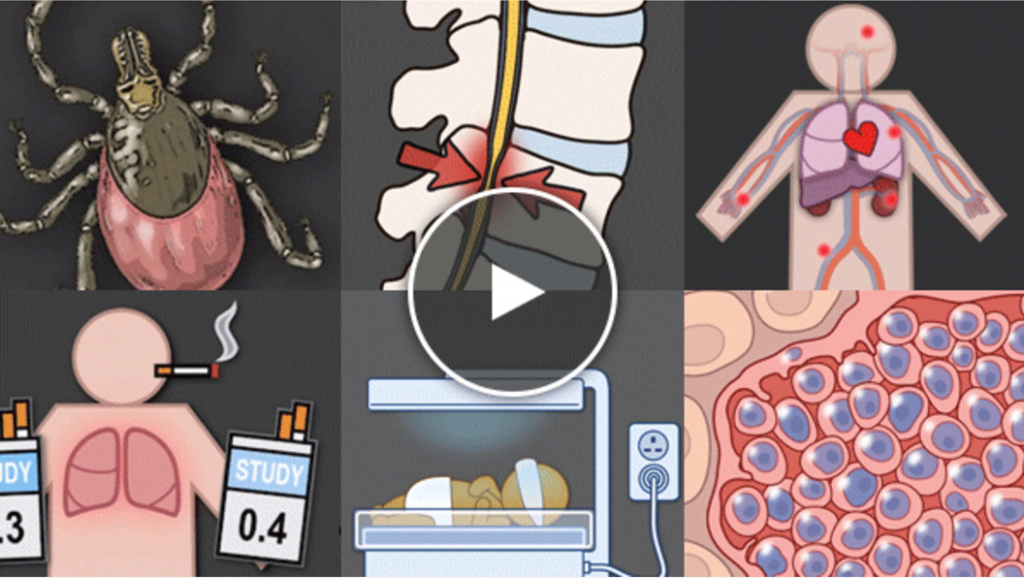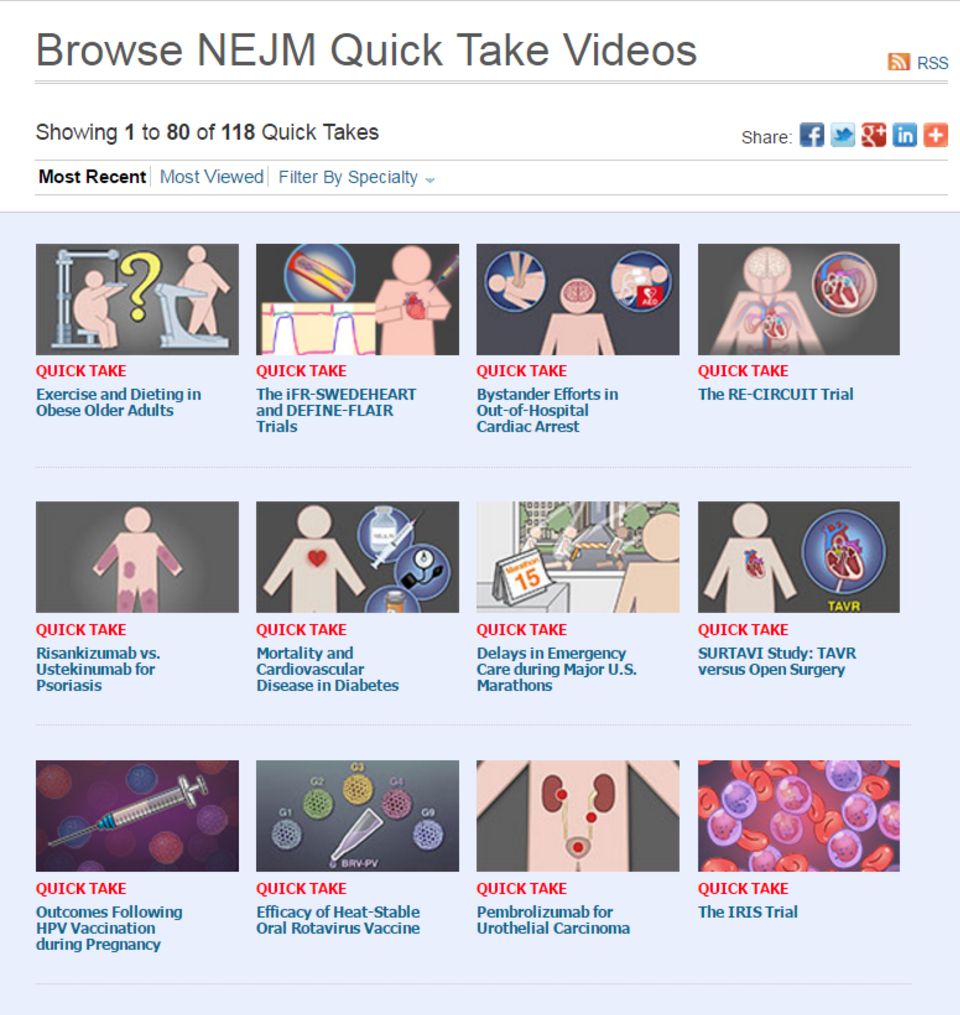NEJM Quick Take Videos: A Digital Objects Case Study
The New England Journal of Medicine (NEJM), the world’s leading general medical journal, publishes peer-reviewed research and interactive clinical content for physicians, educators, and other members of the medical community.

Challenge
Since 2013, when NEJM launched its Quick Take video feature—two-minute video summaries of key medical findings embedded in related articles—they have become so popular that some readers prefer them to full-text articles. NEJM wanted to monetize this increased demand.
But the videos were effectively trapped in the articles that they summarized. Because they could not be accessed independently, there was no way to encourage direct engagement with them or for a reader to find them, nor was there a straightforward way to control access to or license the videos. And while they could be viewed on desktops, laptops, and mobile devices, the user experience was inconsistent across devices, and in some cases subpar.
Solution
Atypon implemented its Digital Objects technology to give NEJM direct control of its Quick Takes.
Digital Objects assigns a DOI, or digital object identifier, to any type of content—including blogs, news articles, videos, images, and interactive data visualizations—allowing it to be tagged, searched, tracked, discounted, promoted, bundled, and sold as easily as a journal article. Publishers can specify how a Digital Object looks and display it in different ways in different locations on their site.
Now that NEJM videos function as stand-alone elements, they can be accessed directly while remaining part of the associated article. Video usage analytics are tracked separately from the articles themselves, and Literatum’s user interface and design tool enables NEJM to easily place videos inside associated articles or anywhere else on their site.
NEJM also established an automated submission workflow that automates the assignment of the videos’ DOIs and metadata tagging. QuickTake videos have been migrated to a content delivery network, which improves the speed with which they display on various devices and delivers them at the correct screen size.
Results
By employing Digital Objects, NEJM can now offer its popular Quick Take videos under licensing models that differ from the articles in which they appear. (For example, Quick Take videos are offered for free as a way to promote the paywall-protected articles they’re part of.) The publisher also repackages the videos, promoting numerous Quick Takes on a single web page. With more control over the videos, NEJM can now optimize their performance across all devices
Looking for a new technology partner?
Talk to us about your business objectives. We’ll tell you about our strategies and solutions.






